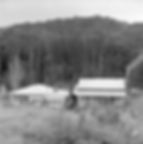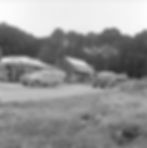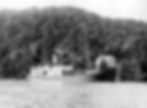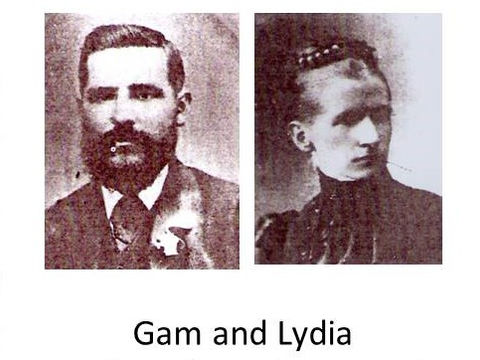
Here's just a small sampling of the historical treasures that shape the ‘Corinna Wilderness Village’ experience today.
About Corinna Wilderness Village

The village of Corinna is, as the sea eagle flies, 60km north of Strahan, 70km west of Cradle Mountain and 18km from the Southern Ocean. It sits at the southern end of takayna/Tarkine, the largest temperate rainforest in Australia – and is the northern most point where the famous Huon Pine grows. This ancient unbroken tract of rainforest shows a world beyond human memory and is a living, breathing link with the ancient super continent Gondwanaland.
For some 40,000 years, takayna was home to Tasmanian Aboriginal people including the Tarkiner, Peternidic and Manegin clans. These maritime people lived close to the shoreline, where they thrived off the bounty of the sea and coastal heathlands. While the great forests of takayna were part of their spiritual homelands and site of occasional forays, they dwelt on the more hospitable coastal fringes, particularly around river mouths including the ruyririm/Pieman, which was the home of the Peternidic.
The Tarkiner, after whom the region is named, lived further north, near Sandy Cape, and the Manegin further north again at the mouth of the Arthur River.
There is debate over whether the Pieman River was named after Alexander Pearce or Thomas Kent. Alexander Pearce, “the Pieman”, was a convict transported to Macquarie Harbour, who escaped, and killed and ate his companions to survive. The 2008 film, Dying Breed, is based on this legend. Thomas Kent of Southampton, was a pastry-cook nicknamed the Pieman, who was transported to Van Diemen’s Land in 1816.
Both men had escapes that led to the Pieman area as far as many stories are concerned. The legend of Alexander Pearce has since been exploded with the evidence that as an Englishman baker, Thomas Kent was known as 'the pieman', thus it is named after Kent not Pearce.
The Pieman River has a long history. The river was originally called the Retreat and was renamed the Pieman in 1823 by Captain James Kelly. The coastal transect on the wild west coast between Granville Harbour and Pieman Head presents a wild coastal system seen by very few people in the world.
There was a time when schooners laden with Huon Pine left the river through the Heads, and when steamships, not much bigger than the Arcadia II, came up the river and discharged their cargoes at Corinna and the nearby Donaldson’s Landing.

A timeless lifestyle and fragile resource balance was disrupted in the early 1800s when marauding sealers operating further north stole natural resources, kidnapped women and introduced diseases. Worse was to come, following the establishment of the huge Van Diemen’s Land (VDL) pastoral company in the North West in 1825, which catastrophically disrupted a way of life that had continued undisturbed for thousands of years.
The end of tribal life in takayna came with devastating momentum over the next decade. Disease, coercion, force and, ultimately, exile thinned the population until its demise. Government agent George Augustus Robinson set out on his first West Coast expedition to rid the region of all Aboriginal people in 1830. By 1834, the removal of north-east clans over the next four years to permanent off-shore detention on Flinders Island was deemed complete.
Takanya retains great cultural and spiritual significance to Tasmanian Aboriginal communities today, with many sites including middens and hut depressions offering precious links to the land’s original custodians.

Corinna was inhabited by white settlers in 1881 and proclaimed a town in 1894, following a flood of people coming to the area in pursuit of gold. Takayna played a central role in the development of Tasmania's early mining industry, and remains of early mining activity can still be seen in many rivers and creeks in the area that were mined for gold, tin and osmiridium.
Now, the remnants of approximately 600 sites of historic mining activity in the area are still evident. Larger scale mining has, and still is, being carried out mainly at Savage River and Mt Bischoff, with the Silica mine also located nearby. With little evidence remaining elsewhere in the region, the township of Corinna is the only surviving remote area historical mining settlement in Tasmania.

WHYTE RIVER GOLD DREDGE, NOVEMBER 1900
At the opening of the Tarkine Hotel in September 2008, two of the Ellis brothers, Alec and Mort, returned to Corinna, the town they had stewardship of in the 1970’s. The Ellis brothers brought the legendary Arcadia II to Corinna, where she has remained in continuous service for almost 50 years. They also constructed the Whyte River walk, one of the great short walks in Tasmania.

CORINNA MAIN STREET NORTH, CIRCA 1970
After the boom times, there has only been one ferryman or family resident at any one time in Corinna since 1899. John Ahrberg oversaw activities at Corinna from his home at Pieman Heads, from 1899 to 1937. In 1940 a reserve was established.
The remnants of the town were leased to a variety of families over the years with most of the old buildings being lost and some new structures being erected as time passed.
The Polson family, who had been in residence for many years, sold the leasehold to Tarkine Wilderness Pty Limited in September 2005. The Polson's re-established the punt crossing and operated the scenic cruise to the mouth of the Pieman on Arcadia II. These services are still being operated today by the caretakers of Corinna.

CORINNA MAIN STREET SOUTH, CIRCA 1950
The Corinna gold rush was at its peak from the mid 1870’s to the early 1880’s and the largest nugget of gold ever discovered in Tasmania (7.5kg) came from Rocky River, a small tributary of the Whyte River, (itself a tributary of the Pieman) a few km upstream from Corinna in 1883. It aroused considerable excitement and attracted many men from other Tasmanian goldfields.
These were colourful days for Corinna, with a population of 2500 people and sailing ships and steamers making the hazardous entrance through the Heads to bring in eager prospectors and suppliers.
It was far from the quiet, peaceful place it is today. Prospector-historian Mark Ireland, who knocked around the West Coast in the boom days, said it was the toughest town he had ever been in – and there were some rough and tough towns in the west in those years.
Eventually, the town declined in population when the Emu Bay railway to Zeehan was opened in 1900.

THE STAR HOTEL, CORINNA, CIRCA 1890
Corinna, which was once called Royenrine, was the aboriginal name for a young Tasmanian tiger. Corinna’s rip roaring days were in the gold rush of the late 1800’s, when it had two hotels – one on each side of the river, being the Star Hotel on the south, and the Corinna Hotel (formerly the Trial Harbour Hotel) on the north, owned by Gam Webster. Another hotel was built upriver at Donaldson to serve the miners at Middleton Creek. This was sold to Job Savage who later moved the hotel further upstream to the growing township at Corinna. In October 1880, John Foster and wife, Amelia, bore a daughter who was named Mary Corinna Foster and known to be the 'first child born on the west coast since the abandonment of the Maquarie Harbour Penal Settlement.'
Corinna was born when prospectors pushed overland south from Waratah to the Heemskirk, Zeehan and Lyell regions. They cut a track from the river at a point some 19km from its mouth and at this exact crossing point Corinna was established when gold was found in the Pieman’s tributaries.

“By 1893 the town had more than 30 structures: including the two hotels, a post office, a number of stores and shops, slaughter yards and numerous residences.”

“You do not realise you are just a part of the story of the Tarkine.”

Each clan is believed to have spoken a local dialect with linguistic affiliations among other north-western clans enabling fluid communication. Boundaries were somewhat porous, with some overlapping territories that were managed through traditions of reciprocity and ceremony and contested through conflict at other times.
The Peternidic people, also referred to as the Loomindewitherroke, of the Pieman River - which flows past Corinna Wilderness Village - are thought to have been a semi-sedentary people. They spent their days mostly around the river mouth, probably sheltering from rain and cold in simple huts upriver and upstream, and travelling over summer to forage as far south as Port Davey, crossing Macquarie Harbour by canoe.
Food resources were often abundant and varied, with women and girls often harvesting marine food including mussels, abalone, crayfish seals and seaweed, and men leading land-based hunting of small mammals including wallaby, wombat, possums and quolls. Birds including ducks, eggs, herbs and fungi were also eaten. The lack of evidence of scale fish in the diet over the past 3500 years continues to mystify archaeologists and historians.
Mammalian predators were few but included the Tasmanian tigers, from which Corinna is said to take its Peerapper language name.



